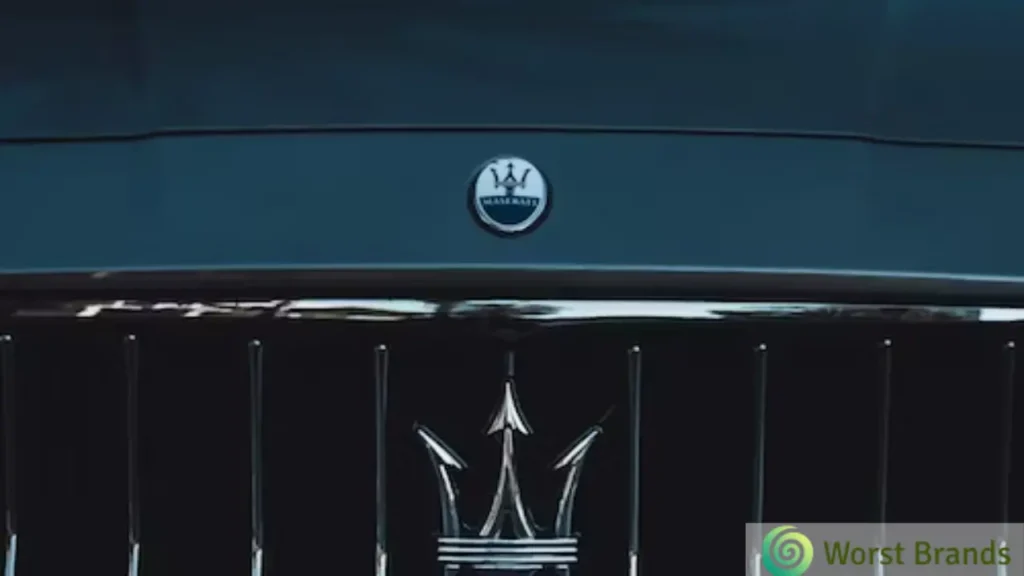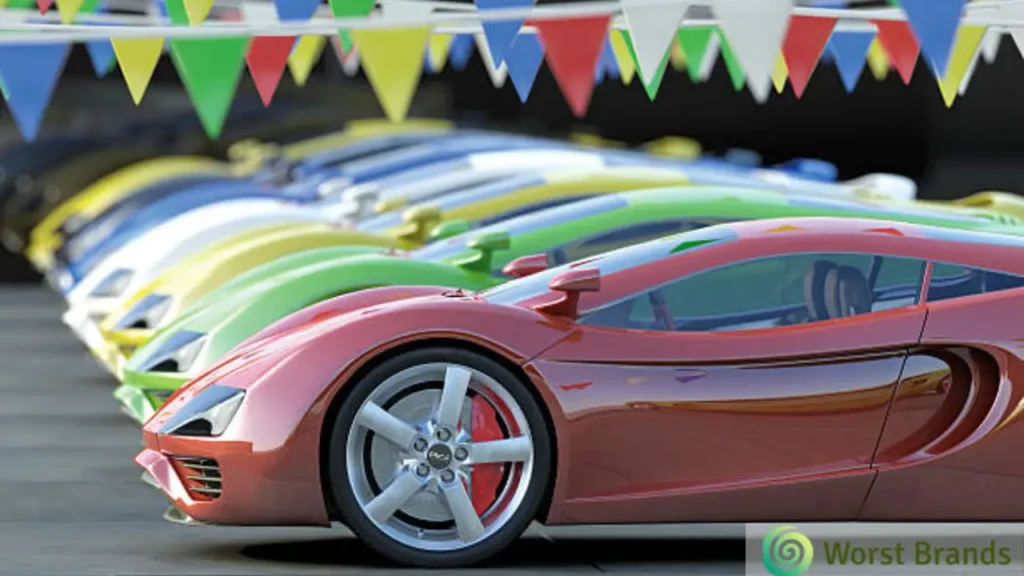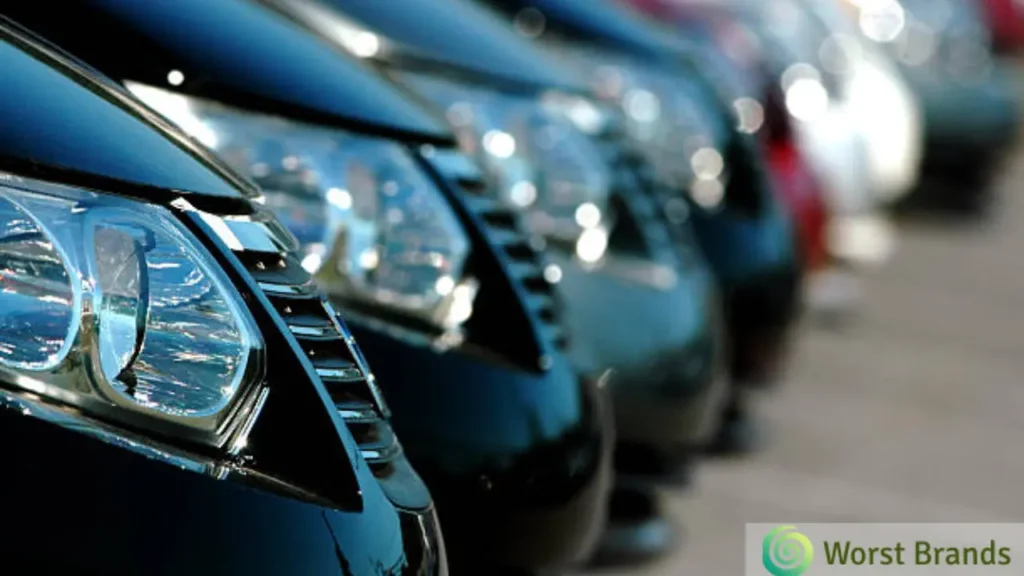When it comes to Italian cars, we often think of sleek designs, roaring engines, and a legacy of speed and luxury. However, not every Italian vehicle is a winner.
In high performance and style, some models have sadly missed the mark. I’ve seen my share of letdowns in the Italian car industry.
I’ve seen my share of letdowns in the Italian car industry, but it’s not just Italian manufacturers facing these challenges.
Similar issues can be found in vehicles from other countries, like bad German vehicles, unsafe Japanese cars, and worse French cars.
Today, I’ll unveil the worst cars from Italy that have, unfortunately, rolled off the production lines.
From disappointing designs to mechanical missteps, we’ll explore why these cars have gained a notorious reputation in the automotive world.
Table of Contents
Worst Italian Cars to Avoid
The worst Italian cars ever made are Maserati Biturbo, Alfa Romeo ARNA, and Fiat Argenta, based on their notorious reliability issues, mechanical failures, and design shortcomings.

1. Maserati Quattroporte 2
In the 1970s, the Maserati Quattroporte 2 emerged as a significant downgrade from its predecessor.
Owned by Citroen at the time, this model’s design was just terrible, looking bulky and disproportionate.
It was a front-wheel-drive Maserati equipped with a less powerful 3.0-liter V-6. It could rarely generate 200 horsepower and reach a top speed of 124 mph.
2. Maserati Biturbo
The Maserati Biturbo, introduced with an aura of excitement, quickly became synonymous with disappointment.
Its 2.5-liter Bi-Turbo V6 engine, initially a beacon of fun and novelty, soon revealed its true colors.
Owners faced a barrage of reliability issues, with the car notorious for unexpected breakdowns within months of purchase.
The Biturbo’s engine was particularly problematic, plagued by overheating turbos that often led to catastrophic engine failures.
The car’s tendency to catch fire due to defective catalytic converters added to its infamy.
The financial burden of owning a Biturbo was exacerbated by the exorbitant cost of repairs, given the high price of Maserati parts.
This combination of unreliability and high maintenance costs firmly places the Maserati Biturbo among the bad Italian cars.
3. Maserati Bi-Turbo Spyder
In the shadows of the Biturbo’s troubles, the Maserati Bi-Turbo Spyder emerged as another letdown.
As a convertible variant, it carried the same mechanical issues that plagued its coupe counterpart.
The Bi-Turbo Spyder’s 2.5-liter V6 engine produced a modest 197bhp (brake horsepower), leading to a lackluster performance with a 0-62mph time of 7.3 seconds and a top speed of just 133 mph.
In a time when Maserati was revered for its sleek and low-profile sports cars, the Bi-Turbo Spyder failed to live up to these expectations.
It lacked the visual and performance appeal one would expect from a car carrying the Maserati badge.
Ultimately, the Bi-Turbo Spyder’s uninspired performance and reliability issues solidified its position as one of the worst Italian sports cars of its era.

4. Alfa Romeo 166
Alfa Romeo, a brand synonymous with creating aesthetically pleasing cars, took an unfortunate detour with the Alfa Romeo 166.
Launched as a competitor to established giants like Audi and BMW, the 166 was a visual and mechanical disappointment.
The design was criticized for its unappealing front, marked by disproportionately small headlights that imparted a ‘sad’ appearance. Mechanical issues compounded this visual letdown.
The 166’s suspension was notoriously fragile, and its 2.0-liter twin-spark engine was a beacon of unreliability.
5. Alfa Romeo ARNA
The Alfa Romeo ARNA is a unique chapter in the history of Italian automotive failures.
A product of a collaboration between Alfa Romeo and Nissan, the ARNA was intended to be a fusion of Italian design flair and Japanese engineering reliability. However, it ended up being quite the opposite.
The ARNA suffered from unpredictable handling due to a mismatched suspension system, coupling the Nissan Cherry’s rear with the Alfa Romeo Sud’s front suspension.
The interior was an awkward mix of 1980s Japanese design and Alfa Romeo components, further adding to its identity crisis.
Although its range of boxer engines performed decently, the car was let down by unreliable Italian electronics.
The ARNA’s failure significantly tarnished Alfa Romeo’s reputation, symbolizing a missed opportunity in cross-cultural automotive innovation.
6. Ferrari 348
The Ferrari 348, while not an outright disaster, stands as a notable misstep in Ferrari’s storied history.
It was mechanically an evolution of the 308/328 models, inheriting some design elements and the iconic side strakes from the Testarossa.
The 348 featured a 3.4-liter V8 engine capable of hitting a top speed of 171mph.
However, its downfall was not in its performance but in its inability to keep pace with technological advances in the industry.
The arrival of the Honda NSX, with superior handling and performance at a lower price point, significantly undermined the 348’s reputation.
This timing turned the 348 into an Italian sports car to avoid, as it was outclassed in a rapidly evolving market.

Also Read: 12 Worst Made in America cars
7. Ferrari Dino 208 GT4
Ferrari Dino 208 GT4 is often cited as one of the worst Ferraris, marking a low point in the brand’s otherwise illustrious history.
Launched in the mid-1970s, it was powered by a modest 2.0-liter engine producing a mere 168 horsepower, leading to an underwhelming top speed of 136 mph.
Its design was very different from the iconic looks of its predecessors, like the legendary 246 GT Dino, contributing to its reputation as one of the ugliest Italian cars.
Produced for just 5 years with only 840 automobiles made, the Dino 208 GT4’s lack of power and uninspiring aesthetics make it a disappointing outlier in the Ferrari lineup.
8. Lancia Stratos HF Stradale
Lancia’s Stratos HF Stradale, designed for rally dominance, ironically became a challenging vehicle on regular streets.
Its conception for the World Rally Championship demanded agility, leading to a short wheelbase and limited overhangs.
While these features contributed to its rally success, they rendered the Stratos twitchy and difficult to handle at the limit on standard roads.
Though potent in rally settings, the mid-mounted 2.4-liter Dino V6 engine contributed to the vehicle’s unbalanced road behavior.
Furthermore, the driver’s experience was compromised by uncomfortable ergonomics, exemplified by the awkward positioning of the pedals.
This divergence between its rally prowess and road practicality rendered the Stratos HF Stradale an enigma in Lancia’s lineup.
9. Lancia Beta
Lancia Beta’s launch in 1969 symbolized a new beginning for Lancia under Fiat’s ownership. However, the Beta fell short of rejuvenating the brand.
Despite Lancia’s reputation for well-engineered vehicles, the Beta struggled with numerous issues.
It was an attempt to modernize without fully committing to innovation, resulting in a car that neither honored Lancia’s engineering heritage nor offered anything notably new.
The car was manufactured with thin steel sheets from the Soviet Union. However, the car started disintegrating since the sheet was highly corrosion-prone.
The brand had to recall their cars from the UK, spending millions of Liras. This incident tarnished the brand’s reputation, making it among the Italian car brands to avoid.
10. Lamborghini Jalpa
You might be surprised to see Lamborghini on our list, but even top-quality brands are not immune to mistakes.
Lamborghini’s attempt to offer an affordable alternative to the iconic Countach resulted in the Jalpa. It was a market flop, with only 400 units sold, making the worst Lamborghini ever.
The Jalpa’s design lacked the striking visual impact typical of Lamborghini, contributing to its unenthusiastic reception.
Its V8 engine, while capable of reaching 150 mph, was considered unreliable, adding to the vehicle’s woes.
Due to its intricate structure, the Jalpa’s maintenance complexities further diminished its appeal.
11. Lamborghini Espada
The Lamborghini Espada is a unique chapter in the brand’s history, known more for its eccentricity than for high performance or cutting-edge design.
Despite its distinctive style, the Espada often found itself overshadowed by its more successful siblings in the Lamborghini family.
The car’s unconventional design was a point of contention among enthusiasts and critics alike.
While it showcased Lamborghini’s willingness to experiment with design and form, Espada’s overall impact and legacy within the automotive world remained limited.
12. Fiat Argenta

Lastly, the Fiat Argenta is a prime example of a missed opportunity in automotive innovation.
Originating as a hasty redesign of the Fiat 132, the Argenta inherited many of its predecessor’s outdated features.
This lack of progress in mechanical development resulted in subpar handling and performance that did not align with the evolving standards of the time.
Although respectable in their own right, the car’s twin-cam engines were overshadowed by the introduction of a lackluster 77-horsepower diesel engine, further dampening its appeal.
The Argenta’s failure to modernize or significantly improve upon the 132’s foundation contributed to its status as one of the least favorable Italian cars.
Conclusion
It’s evident that even the most esteemed Italian manufacturers have had their share of blunders.
While these worst Italian cars may not reflect the overall reputation of Italian automotive, they remind us that even giants can stumble.
For car enthusiasts and potential buyers, it’s crucial to look beyond the allure of a brand name and consider the practical aspects of car ownership.
Remember, not all that glitter is gold, especially in Italian vehicles.

Erica Steven is the founder and lead writer of WorstBrands, a site dedicated to providing honest and trustworthy reviews about outdoor gear and fashion products.
With a passion for exploring the great outdoors and staying up to date on the latest fashion trends, Erica uses her expertise to provide valuable insights into the products that matter most to her readers.
Whether you're looking for camping equipment or the latest fashion accessories, Erica's articles are the perfect resource for finding the best products that fit your lifestyle.